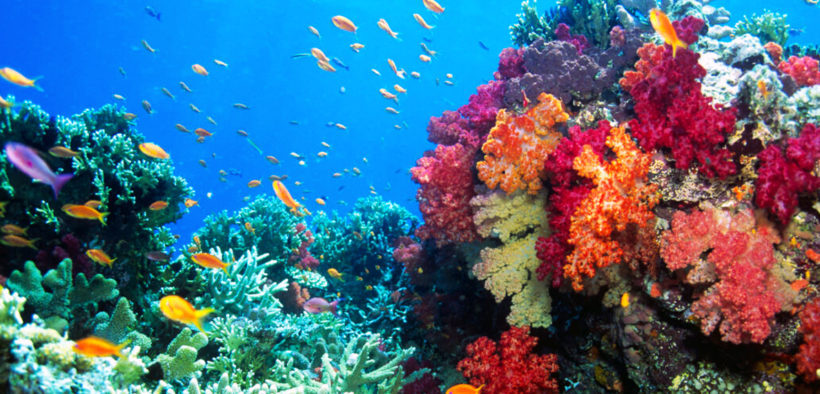Marine Life

Marine Life:
The term marine comes from the Latin word “mare”, meaning “sea or ocean”. Marine life is the
plants, animals and other organisms that live in the salt water of the sea or ocean, or the
brackish water of coastal estuaries. There are a number of species living in the aquatic
regions. Water bodies count as a major part of the earth.
Why is marine life important?
The world ocean provides so many benefits. Here are the things the ocean does for
humans and the planet:
The air we breathe: The ocean produces over half of the world’s oxygen. It absorbs 50
times more carbon dioxide than our atmosphere.
Climate regulation: Oceans cover 70% of the world’s surface. The ocean transports heat
from the equator to the poles, regulating our climate and weather patterns.
Transportation: 76% percent of all U.S. trade involves some form of marine
transportation.
Recreation: From fishing to boating and whale watching, the ocean provides us with many
unique activities.
Economic benefits: The U.S. ocean economy produces $282 billion in goods and services.
Ocean-dependent businesses employ almost three million people.
Food: The ocean provides more than just seafood. Ingredients from the sea are found in
surprising foods such as peanut butter and soymilk.
Medicine: Many medicinal products come from the ocean. Also, the ingredients that help fight
cancer, arthritis, Alzheimer’s disease, and heart disease.
Marine Mammals & Plants:
Marine mammals are aquatic mammals that rely on the ocean and other marine ecosystems for
their existence. They include animals such as seals, whales, manatees, sea otters and polar
bears. They are an informal group, unified only by their reliance on marine environments for
feeding and survival.
Marine plants grow near the surface of salt water and ice, within reach of sunlight
necessary for photosynthesis. Marine plants consist of two major types, the sea
grasses and the algae and seaweeds. Sea grasses represent members of some of the
more complex plants, while algae and seaweeds display simple forms and are often
microscopic. Marine plants range from tiny single-celled organisms to large, intricate
forms.
How can we protect marine life?
- Mind your carbon footprint and reduce energy consumption. Reduce the effects of climate change on the ocean by leaving the car at home when you can and being conscious of your energy use at home and work. A few things you can do to get started today: Switch to compact fluorescent light bulbs, take the stairs, and bundle up or use a fan to avoid oversetting your thermostat.
- Make safe, sustainable seafood choices: Global fish populations are rapidly being depleted due to demand, loss of habitat, and unsustainable fishing practices. When shopping or dining out, help reduce the demand for overexploited species by choosing seafood that is both healthful and sustainable.
- Use fewer plastic products. Plastics that end up as ocean debris contribute to habitat destruction and entangle and kill tens of thousands of marine animals each year. To limit your impact, carry a reusable water bottle, store food in non-disposable containers, bring your own cloth tote or other reusable bag when shopping, and recycle whenever possible.
- Help Take Care of the Beach. Whether you enjoy diving, surfing, or relaxing on the beach, always clean up after yourself. Explore and appreciate the ocean without interfering with wildlife or removing rocks and coral. Go even further by encouraging others to respect the marine environment or by participating in local beach cleanups.
- Don’t purchase items that exploit marine life. Certain products contribute to the harming of fragile coral reefs and marine populations. Avoid purchasing items such as coral jewelry, tortoiseshell hair accessories, and shark products.

I am an introvert who has an unquenchable thirst for knowledge. I like to view the world with an optimistic eye.









